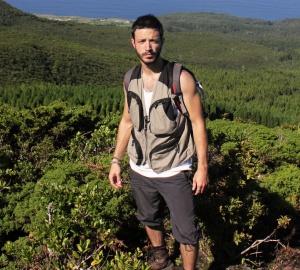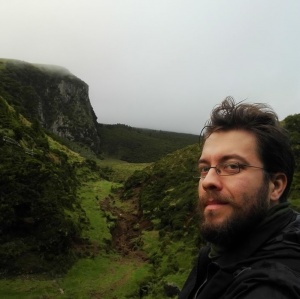Ferrante, M., Nunes, R., Lamelas-López, L., Lovei, G.L. & Borges, P.A.V. (2022) A novel morphological phenotype does not ensure reduced biotic resistance on an oceanic island.
Biological Invasions,
24, 987-997. DOI:10.1007/s10530-021-02686-2 (IF2022 2,9; Q1 Biodiversity Conservation)
Biotic resistance by the local community is a prominent theory seeking to explain invasion success or failure. Oceanic island communities might be prone to invasions because of their assumed low biotic resistance, due to low species richness and ecological naivety towards invaders. Biotic resistance, however, has rarely been quantified. We attempted such quantification on Terceira Island (Azores, Portugal) using the sentinel prey method. Vanessa virginiensis, a widely distributed Nearctic butterfly, has not been recorded on Terceira, and their caterpillars have characteristic green–black stripes that make it dissimilar to other Azorean caterpillars. We examined whether predation rate (PR) on plasticine caterpillars mimicking the unfamiliar V. virginiensis pattern were lower than on familiar green ones. We exposed a total of 4479 caterpillars in native forests and five non-native habitats, the agroecosystems orchards, vineyards, low and high elevation maize fields, and intensively managed pastures. Overall PR was higher on caterpillars with the unfamiliar than with the familiar pattern (6.4%d−1 vs. 3.7%d−1). Invertebrate PR was also significantly higher on the unfamiliar than on the familiar pattern in the native forest (5.9%d−1 vs. 1.0%d−1), as well as vertebrate PR in orchards (4.8%d−1 vs. 2.3%d−1) and low elevation maize fields (7.4%d−1 vs. 2.2%d−1). Our results suggest the existence of biotic resistance even on a species-poor, remote island, and that a novel morphological phenotype in itself does not guarantee reduced predation pressure.





